They must be integrated
This reporter attends school every weekday for lectures. The one-way subway fare from my home to Kwangwoon University is 1700 won, and there are 22 weekdays in a month, so I spend 74800 won (1700 won × 2 (round trip) × 22 weekdays = 74800 won) on transportation. Recently, news about transportation discount policies has been circulating, but it only added to my confusion. Seoul introduced the Climate Card last February, and the central government will launch K-Pass in May. I'm just unsure which of the two options would be more beneficial for me.
Central government’s public transport discount programs : Affordable Transportation Card and K-Pass
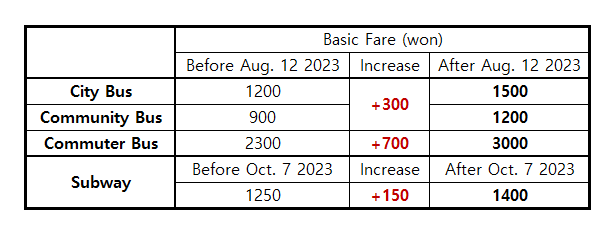
Energy prices have skyrocketed due to the Russo-Ukrainian war, and factors such as providing free rides for the elderly on the subway have contributed to an increasing deficit. Consequently, the basic fare for public transportation has been raised. While transportation fares in Korea remain relatively low compared to other countries, this increase has placed a heavier burden on office workers and students who rely heavily on public transportation.
To reduce this burden, the central government (Ministry of Land, Infrastructure and Transport, MLIT) launched Affordable Transportation Card from June 2021.

This card includes both prepaid options like T-money and Cashbee, as well as postpaid cards embedded in credit or check cards. To utilize the card, users register it through an application and designate their points of departure and destination, along with the subway stations or bus stops they use. The card then calculates travel distance via GPS, awarding mileage accordingly. If a journey exceeds 800 meters, a specific amount of mileage is accrued based on the one-way fare, while distances under 800 meters accumulate mileage proportionally.
The central and local governments share half of the budget for mileage. However, residents in regions facing budget constraints may be unable to participate, limiting their access to the program. In some provinces (Gangwon, Chungbuk, Jeonbuk, Jeonnam, Gyeongbuk), it was only available in some areas.
Later, MLIT will reform the Affordable Transportation Card into the K-Pass starting from May to address these challenges. Regardless of travel distance, mileage is accumulated at a certain rate (Regular:20%, Youth(19~34):30%, Low Income Group:53.3%). Individuals who use public transportation more than 15 times a month can earn mileage equivalent to 60 trips per month. The availability of the K-Pass will also expand to include all regions with over 100,000 residents, as well as selected areas with fewer residents.
Local government’s public transport discount programs : Connected to the K-Pass, or Separated
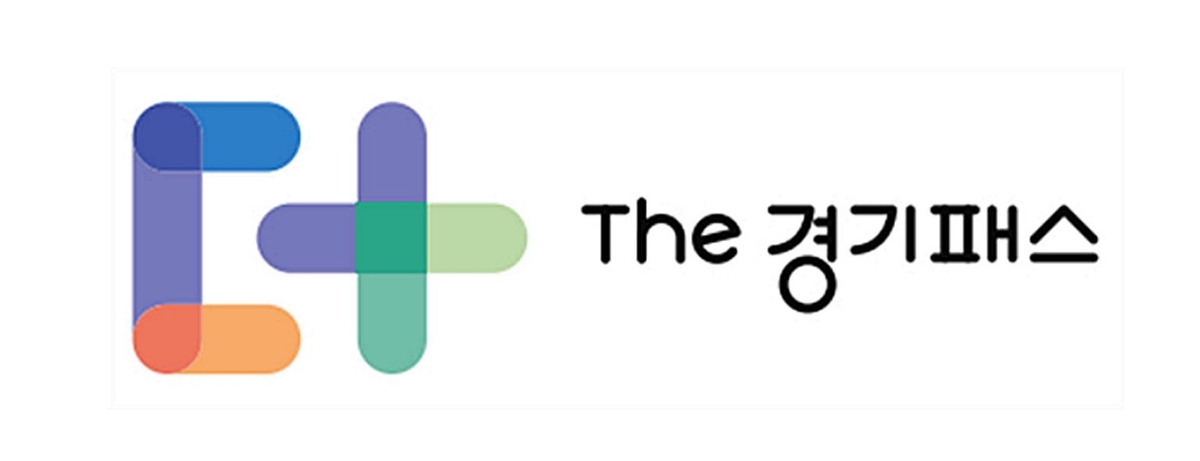
Incheon and Gyeonggi will introduce additional benefits linked to the K-Pass, specifically tailored for their residents. Unlike K-Pass, these are no mileage accumulation limit in The Gyeonggi Pass and Incheon I-Pass, and the age limit for youth extends up to 39. Furthermore, the Gyeonggi Pass offers 240 thousand won for minors, while the Incheon I-Pass provides 120 thousand won for minors. Seniors aged over 65 are eligible for a 30% discount, similar to youth discounts.
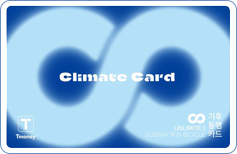
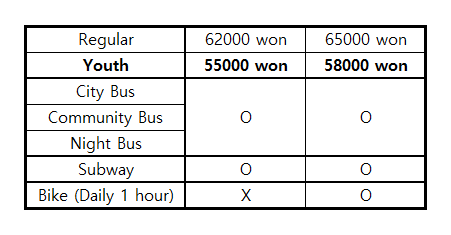
Apart from the K-Pass, some local governments have introduced their own public transport discount programs. Seoul launched Climate Card last February, offering an unlimited transportation pass. With the Climate Card, users can enjoy unlimited public transportation in Seoul for a fixed monthly fee. The plan for subway and city bus access, costs 62,000 won per month. If you require a 1-hour bike pass every day, you can add this option for an additional 3,000 won.
Additionally, individuals under 34 years old can opt for the youth plan, which is 7,000 won cheaper than the regular plan. To use the youth plan, users must register their Climate Card on T-money. Any price difference between the youth plan and the regular plan used up to June will be refunded starting from July.
While initially launched by Seoul, this discount will also be available in Incheon and certain cities in Gyeonggi (Gimpo, Gunpo, and Gwacheon) starting from April.
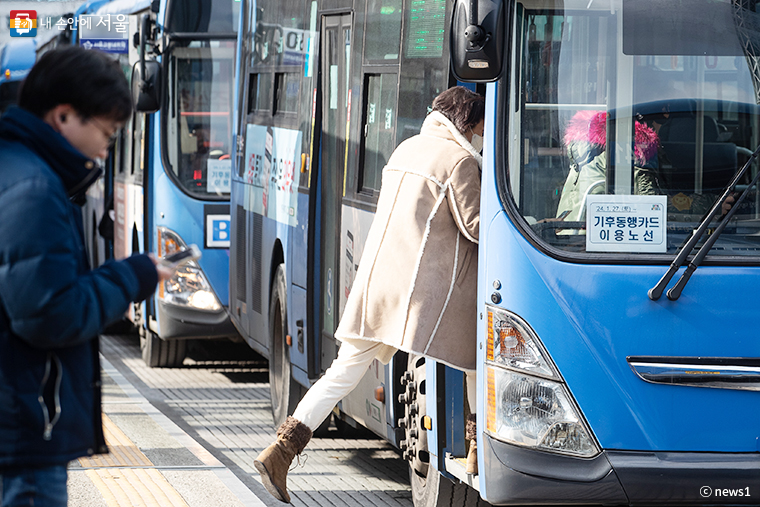

When using the Climate Card, it's important to note that while Seoul city buses are accessible even if you ride solely within Gyeonggi, city buses in Incheon and Gyeonggi are not available for use. Additionally, the Climate Card cannot be used on commuter buses, airport buses, or the Shinbundang DX Line. It is also not available on GTX (Great Train eXpress), which is scheduled to partially open on March 30.

The subway is limited to Seoul, although certain sections outside Seoul permit access. However, there are some sections outside Seoul where you can only disembark; boarding is not permitted.
Additionally, the mobile card option is limited to Samsung Galaxy devices. If you have an Apple iPhone or another Android phone, you won't be able to use the mobile card feature. In such cases, you'll need to purchase a card from subway station counters or convenience stores.
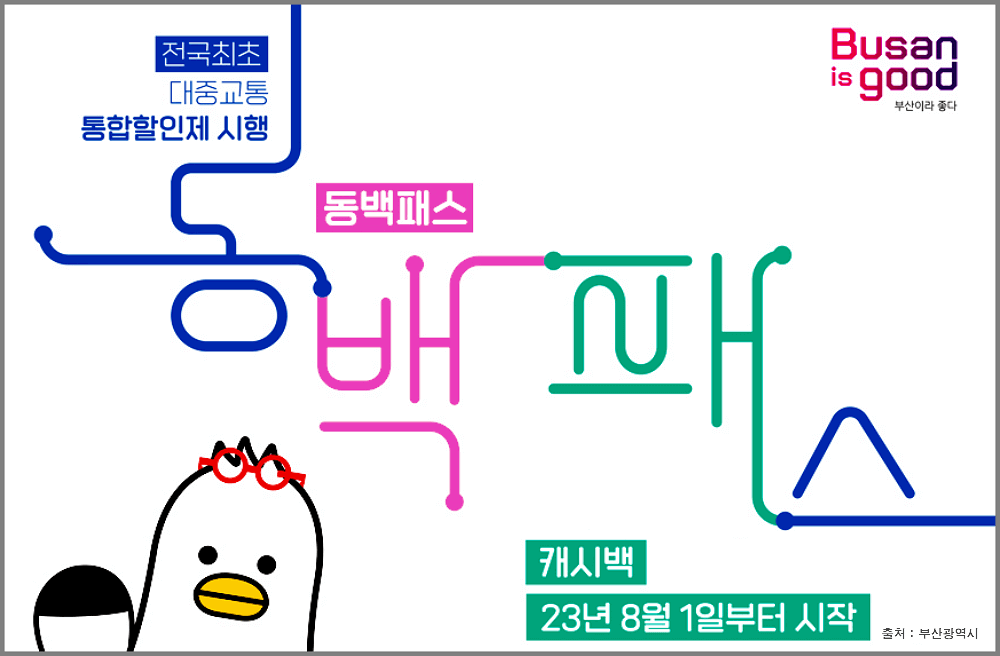
Busan launched Dongbaek Pass from August 2023, based on Dongbaekjeon, Busan’s local currency. If your Dongbaekjeon check card (issued by Hana, Nonghyup, or Busan Bank) includes an embedded postpaid transportation card, you can apply for the Dongbaek Pass by registering your card through the application. With the Dongbaek Pass, you are eligible to receive a refund of up to 45,000 won.
Which program is more beneficial for me?
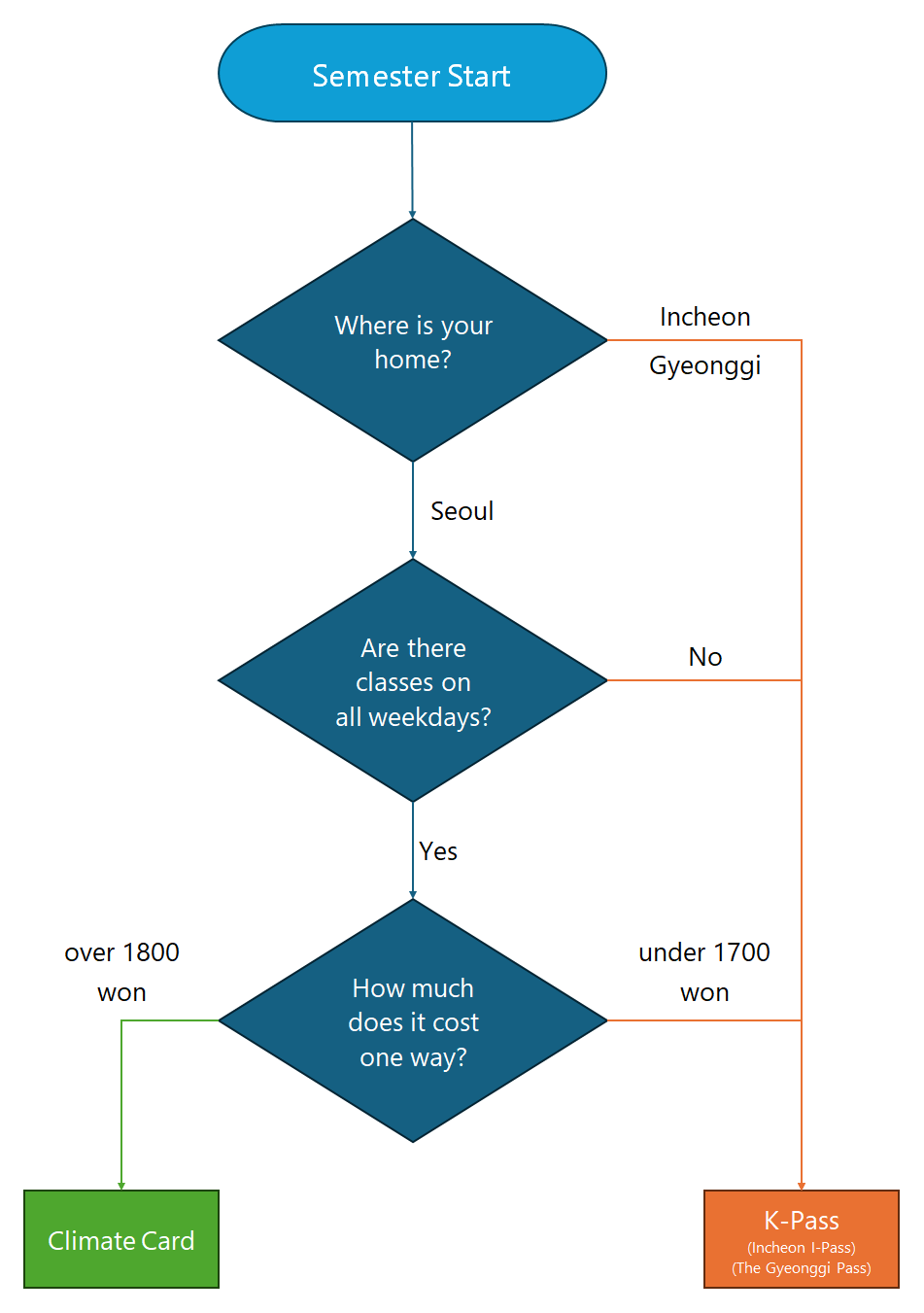
Perhaps many readers, like myself, are students. Therefore, let me explain based on a youth discount perspective. If you live in Seoul, attend classes on all weekdays, and your one-way fare exceeds 1800 won, then the Climate Card (priced at 55,000 won) would be more advantageous compared to the K-Pass (calculated as 1800 won × 2 (round trip) × 22 weekdays × 70% (youth discount) = 55,440 won). However, if your one-way fare is below 1700 won, then the K-Pass (calculated as 1700 won × 2 (round trip) × 22 weekdays × 70% (youth discount) = 52,360 won) would be more advantageous than the Climate Card (priced at 55,000 won).
If you don't have to attend school every weekday, the K-Pass becomes more advantageous than the Climate Card. For instance, if you have to go to school only four days a week, you would attend school for approximately 17 to 18 days in a month. Considering the highest one-way fare in Seoul is 1900 won, using the K-Pass would result in a monthly fare of 47,880 won (calculated as 1900 won × 2 (round trip) × 18 weekdays × 70% (youth discount) = 47,880 won), making it 7,120 won cheaper than the Climate Card.
For those commuting to school from Incheon or Gyeonggi, the only viable option is to use the K-Pass. The Climate Card program is specifically implemented by the Seoul, and is not available in areas such as Incheon or Gyeonggi.
It's good to receive a discount, but can't they integrate?
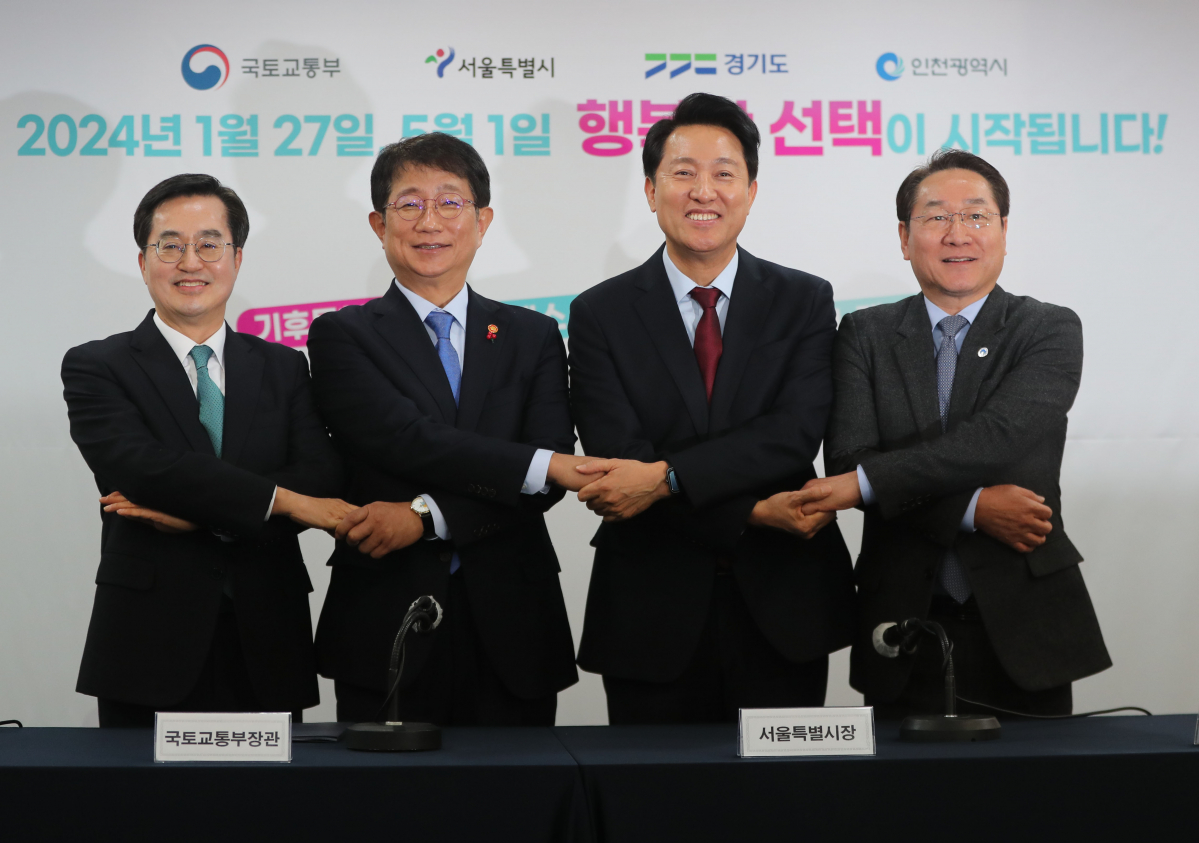
Not only the central government, but also each local government launches discount programs. Office workers and students who benefit from these programs are confused about which one is more beneficial to use. While Seoul individually consulted with Incheon and some neighboring cities in Gyeonggi when launching the Climate Card, it did not consult with Gyeonggi. As a result, Gyeonggi did not join the Climate Card program.
Will it work effectively?
Of course, it's beneficial from an eco-friendly perspective that the utilization of public transportation increases and the reliance on private cars decreases due to these discount programs. Public transportation can accommodate more passengers while consuming less energy compared to private cars. This aligns with the purpose of the Climate Card.
Although Korean public transport fares are already cheaper than in other countries, the rate of public transportation usage is not as high as desired. The burden of transportation fares is not the primary reason for people's reluctance to use public transport. Instead, other factors such as congestion during rush hours, long intervals between services, frequent delays, and slow travel speeds due to insufficient rapid services play a significant role. To increase the rate of public transportation usage, it is crucial to focus on providing better public transportation services by making major improvements to the infrastructure, rather than relying solely on pork-barrel programs such as simple fare discounts.
Will discount programs be sustainable?
On the other hand, a question arises regarding the sustainability of these discount programs. Currently, subway companies are grappling with deficit factors, while city bus companies are operating at a loss and rely on subsidies from local governments to sustain their operations. In such circumstances, deficit factors are further exacerbated by the implementation of these discount programs.
Budget is also a problem. In Seoul, new memberships for the Affordable Transportation Card were suspended starting from August 2021 due to budgetary limitations. Additionally, mileage refunds were also suspended as of December 2021. However, with the arrival of the new year's budget in January 2022, both new memberships and mileage refunds have been resumed.
How did Germany do it? : 9-Euro Ticket

At this point, I would like to introduce a case from Germany. In Germany, a transportation pass called the 9-Euro Ticket was sold from June to August 2022. Essentially, individuals who paid 9 euros (13,000 won) per month for this ticket could ride all forms of public transportation (subway, regional train, city bus, tram, ferry) nationwide and unlimitedly.
According to The Association of German Transport Companies, 27% of 9-Euro ticket users had only used public transportation once a month, but now they use it more frequently due to this ticket. Additionally, 20% of 9-Euro ticket users had not used public transportation at all, but now they use it often because of this ticket. Over the 3 months of this program, 1.8 million tons of carbon dioxide (CO2) were reduced, equivalent to the reduction that can be achieved by imposing speed limits on a highway for a year. Thanks to its popularity, Berlin introduced 29-Euro Ticket (41800 won) from October 2022 to April 2023. From May 2023, a 49-euro (70000 won) Deutschland Ticket was launched nationwide.


Of course, with the introduction of the public transport discount program, Germany also experienced similar problems to Korea. Although the number of passengers increased, the capacity remained the same, leading to increased congestion. Like Korea, the Deutschland Ticket is funded jointly by the federal and state governments. Consequently, some states with low financial independence insisted that the ticket price must be increased due to budget constraints. However, the fact that public transportation can be used regardless of region and operator has significant implications for Korea's fragmented public transportation discount programs, which cause confusion among locals in different regions.
We want an integrated nationwide discount program

Nowadays, everyone is accustomed to free transfers between the subway and city buses. However, before 2003, neither free transfers nor transfer discounts existed. Consequently, people had to pay double fares, discouraging the use of public transportation. However, Incheon implemented free transfers in 2003, followed by Seoul in 2004. By 2005, the fare systems between Seoul and Incheon were integrated. From 2007, Gyeonggi joined the Seoul Metropolitan Integrated Fare System. Thanks to this system, the rate of public transportation usage increased compared to before, leading to a decrease in traffic jams caused by private cars and carbon emissions.
This reporter suggests the establishment of a consultative group consisting of the central government (MLIT) and local governments. Although their political parties and factions may differ, they should set aside any political ulterior motives, especially with an upcoming election approaching. To alleviate fare burdens and promote increased public transportation usage for transportation and environmental solutions, the integration of fragmented public transport discount programs is necessary. At this juncture, I would like to address bureaucrats and politicians by slightly altering the famous lines from the movie '12.12: The Day', which was released last year, and convey this message. “All Korean public officials are on the same side.”

